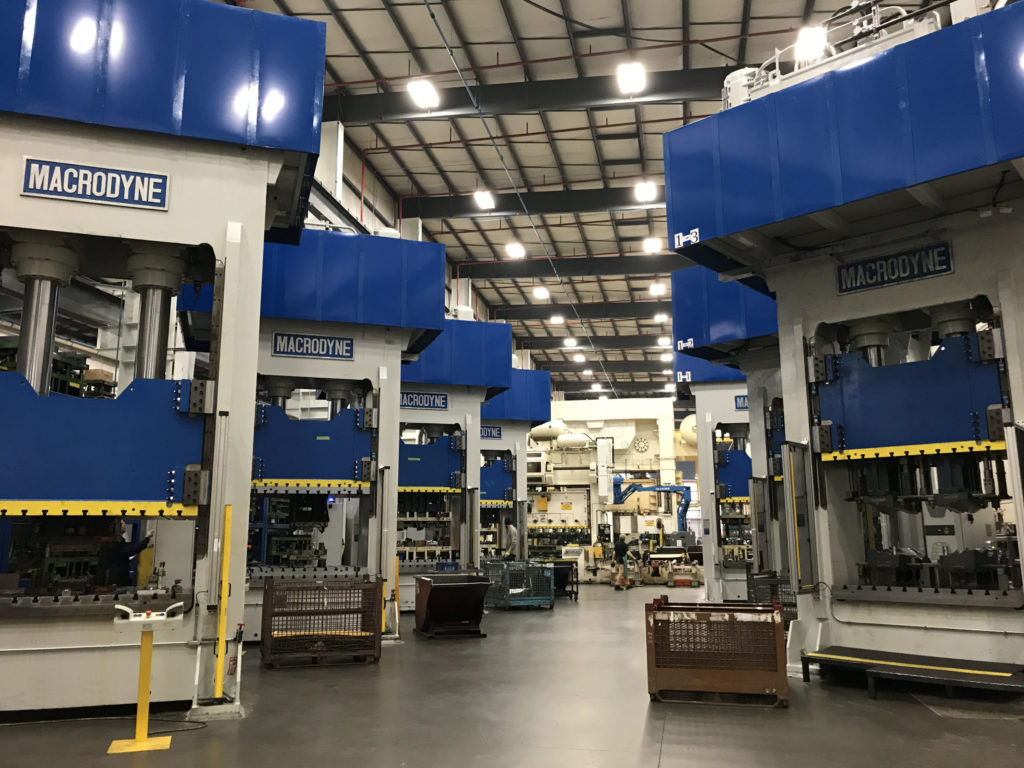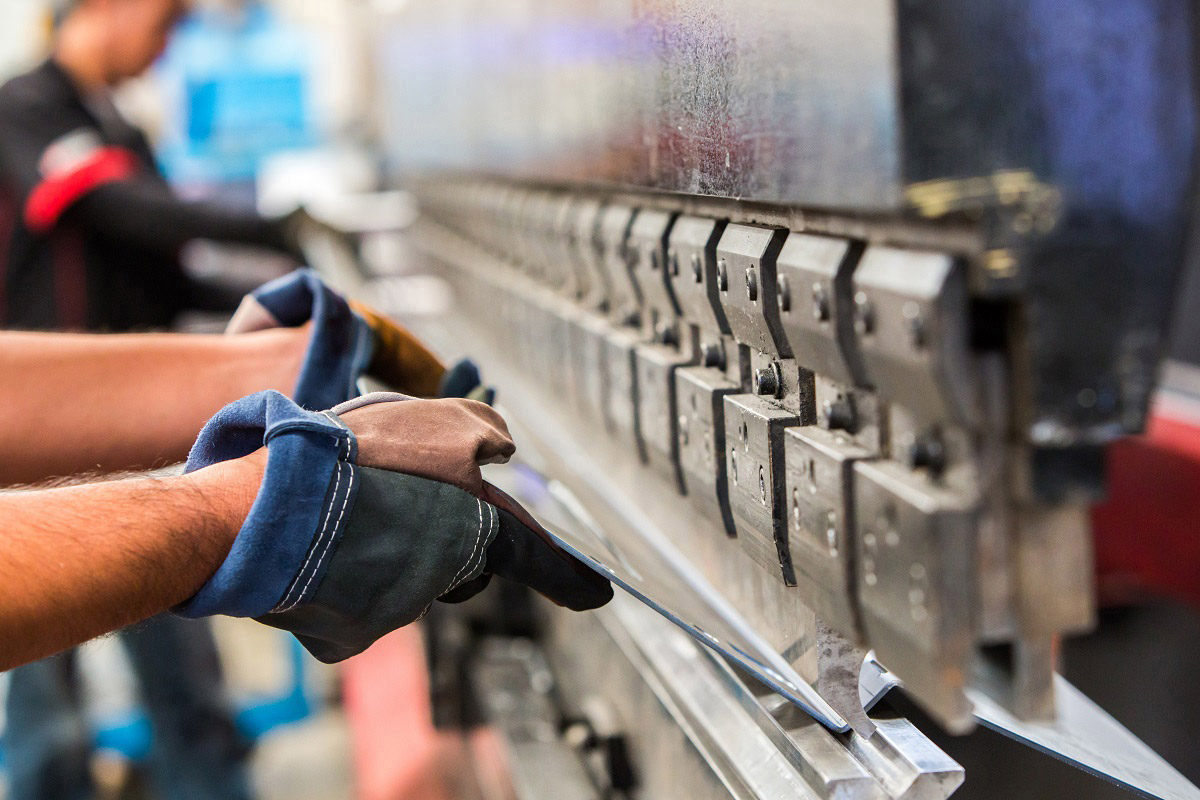Metal Stamping: Every Little Thing You Required to Know About the Process
Metal Stamping: Every Little Thing You Required to Know About the Process
Blog Article
Releasing the Potential of Steel Stamping: Professional Tips and Ideal Practices Exposed
In the world of metal marking, where precision and performance reign supreme, the pursuit to enhance processes and unlock covert potentials is a continuous pursuit. As we navigate with the intricate world of metal stamping, a more detailed look at the complexities of tooling style, product option, production performance, high quality control, and emerging fads guarantees a treasure trove of understandings waiting to be discovered.
Tooling Design Optimization
Maximizing tooling style is essential for enhancing effectiveness and precision in metal stamping procedures. A well-thought-out tooling design can dramatically impact the top quality and cost-effectiveness of metal stamping operations. By carefully considering aspects such as material choice, pass away setup, and part geometry, makers can enhance manufacturing procedures and improve overall item quality.
One key element of tooling layout optimization is selecting the most suitable products for the punches and passes away utilized in the stamping process. Proper die design can assist avoid issues such as wrinkling, tearing, and excessive springback, leading to higher manufacturing yields and minimized scrap prices.
Moreover, optimizing part geometry with tooling layout can help minimize product waste and manufacturing time. By very carefully forming punches and passes away to match the wanted part specifications, suppliers can achieve tighter tolerances and enhanced component high quality. On the whole, spending time and resources in optimizing tooling design can result in significant long-lasting benefits for metal marking procedures.

Material Option Approaches
Purposefully selecting products for steel stamping tooling is extremely important for making certain toughness and efficiency in manufacturing procedures. When selecting materials for metal marking applications, a number of crucial elements must be taken into consideration. The initial consideration is the sort of material being marked. Various products, such as aluminum, stainless-steel, or copper, need certain tooling materials to guarantee ideal performance and long life.
An additional vital aspect in material choice is the predicted production quantity - Metal Stamping. For high-volume manufacturing runs, tooling products with superior wear resistance and toughness, such as device steels or carbide, are commonly preferred to endure the rigors of continual marking operations
In addition, the complexity of the stamping layout and the called for accuracy likewise play a considerable function in material selection. For elaborate stamping patterns or limited tolerances, products with high thermal conductivity and superb machinability, like beryllium copper or tool steel alloys, may be preferable to achieve the desired outcomes.
Manufacturing Performance Methods
To enhance manufacturing outcome and reduce manufacturing expenses, executing reliable strategies in metal stamping processes is critical. One crucial method for improving manufacturing effectiveness is purchasing automation. Automated steel marking makers can execute tasks with accuracy, uniformity, and at a much faster price than hands-on labor, leading to increased efficiency and minimized cycle times. In addition, applying predictive upkeep practices can assist prevent unforeseen downtime by identifying possible tools failures before they happen. By on a regular basis monitoring device efficiency and resolving concerns proactively, producers can enhance manufacturing schedules and minimize disruptions.
An additional technique to boost production performance is via continual procedure renovation. Performing regular audits and efficiency evaluations can aid recognize bottlenecks, ineffectiveness, and locations for improvement within the metal stamping procedure. By assessing information and comments from these assessments, producers can implement targeted solutions to enhance procedures, rise throughput, and make the most of general effectiveness.
Additionally, adopting lean manufacturing principles, such as 5S methodology and Kanban systems, can assist remove waste, improve workflow, and improve total productivity in metal stamping procedures. By fostering a culture of continual renovation and equipping workers to contribute concepts for effectiveness gains, makers can unlock the complete capacity of their steel stamping processes.
Quality Control Measures
Structure on the structure of reliable production techniques in steel marking processes, ensuring rigid quality control steps is necessary for maintaining item requirements and client complete satisfaction. Quality assurance in steel marking entails methodical examination, testing, and monitoring of the production processes to recognize and remedy any type of variances or problems that might compromise the end product's stability (Metal Stamping). Carrying out procedures such as normal equipment upkeep, in-process inspections, and extensive testing of completed parts can aid detect issues beforehand and prevent pricey rework or product recalls
In addition to aggressive quality assurance steps, it is vital to develop clear quality requirements and specifications that align with consumer requirements. Regular audits and evaluations of quality processes can assist recognize locations for renovation and ensure uniformity in product top quality. By cultivating a culture of top quality awareness among employees and providing ample training on quality assurance treatments, makers can boost general product reliability and brand name credibility. Ultimately, purchasing durable top quality control gauges not just safeguards versus defects and non-conformities yet also leads the way for continual service growth and customer loyalty.

Innovative Metal Stamping Technologies
Innovations in metal marking innovations have actually changed the manufacturing industry, boosting effectiveness and precision in the manufacturing procedure. Among the most significant technologies is the advancement of description servo press innovation. Servo presses supply unparalleled control over the marking procedure, permitting modifications in dwell, pressure, and rate time with phenomenal accuracy. This level of control results in greater quality components, reduced downtime for tooling changes, and raised total performance.

Furthermore, the adoption of additive manufacturing methods in metal stamping, such as 3D printing of die components, has streamlined the tooling design and production process. This strategy permits higher style versatility, quick prototyping, and cost financial savings in tooling manufacturing. By leveraging these cutting-edge modern technologies, manufacturers can open brand-new levels of performance, top quality, and competitiveness in the metal stamping market.
Conclusion
Finally, the optimization of tooling layout, calculated material selection, effective manufacturing methods, quality assurance measures, and cutting-edge technologies are important for releasing the full potential of steel stamping. By executing these best methods and experienced ideas, manufacturers can enhance performance, raise high quality, and stay affordable in the steel marking industry. It is crucial for firms to continuously examine and enhance their procedures to attain success in this field.
As we navigate with the intricate world of steel stamping, a better look at the ins and outs of tooling design, product selection, production effectiveness, high quality control, and emerging trends promises a treasure trove of insights waiting to be uncovered. A well-thought-out tooling style can significantly impact the high quality and cost-effectiveness of metal marking operations.Building on the foundation of efficient manufacturing techniques in steel marking procedures, making certain rigid high quality control actions is critical useful reference for maintaining product standards and consumer satisfaction. Quality control in steel stamping involves methodical assessment, testing, and monitoring of the production processes to determine and fix any deviations Extra resources or flaws that might endanger the last product's stability.In final thought, the optimization of tooling style, strategic product choice, effective manufacturing techniques, top quality control procedures, and innovative modern technologies are vital for releasing the complete capacity of metal stamping.
Report this page